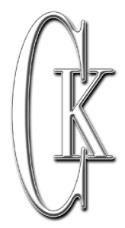EU General Court finds likelihood of confusion in CK trademark dispute
Holder of CK EU trademark (EUTM) in classes 12, 40 and 42 successfully opposes application to register CK1 in class 12 on the grounds of likelihood of confusion.
The question at issue in such disputes is whether the relevant public will mistake the origin of a product or service due to similarity between its brand name and that of another business. Whether this ‘likelihood of confusion’ is found to occur will depend partly on the similarity of the goods/services in question and how similar/identical the marks.

The dispute between Kwang Yang Motor Co and Udo Schmidt over the former’s attempt to register CK1 as a trademark in class 12 (hearses and automobiles) reached all the way to the EU General Court earlier this year. Schmidt had opposed the application in April 2014 on the grounds of likelihood of confusion based on its existing figurative EUTM right CK (pictured left).
EUIPO found in Schmidt’s favour; as did its Board of Appeal (BoA) in November 2016, finding the signs in question to be both visually and phonetically similar. Kwang Yang Motor Co sought to appeal the decision, however the EU General Court agreed with the BoA’s findings, stating that the additional element '1' did not sufficiently undermine the visual and phonetic similarity between the two marks.
When assessing the degree of similarity between marks, visual (the image of the brand/logo), phonetic (aural/pronunciation/sound) and conceptual (conceptual understanding) similarity will be taken into account, as well as similarity of products/services. In this dispute, the issue of conceptual similarity did not apply, as both signs had no conceptual meaning.
Avoiding likelihood of confusion
Trademark searching provides a quick and simple means to investigate the availability of your chosen brand and trade names in your industry and countries of business. For advice on how and why to implement trademark searching as part of your brand launch strategy, please read our article: ‘On your marks: The importance of trademark searching’.
Bodil Koppejan works at Novagraaf’s Competence Centre. She is based in Amsterdam.